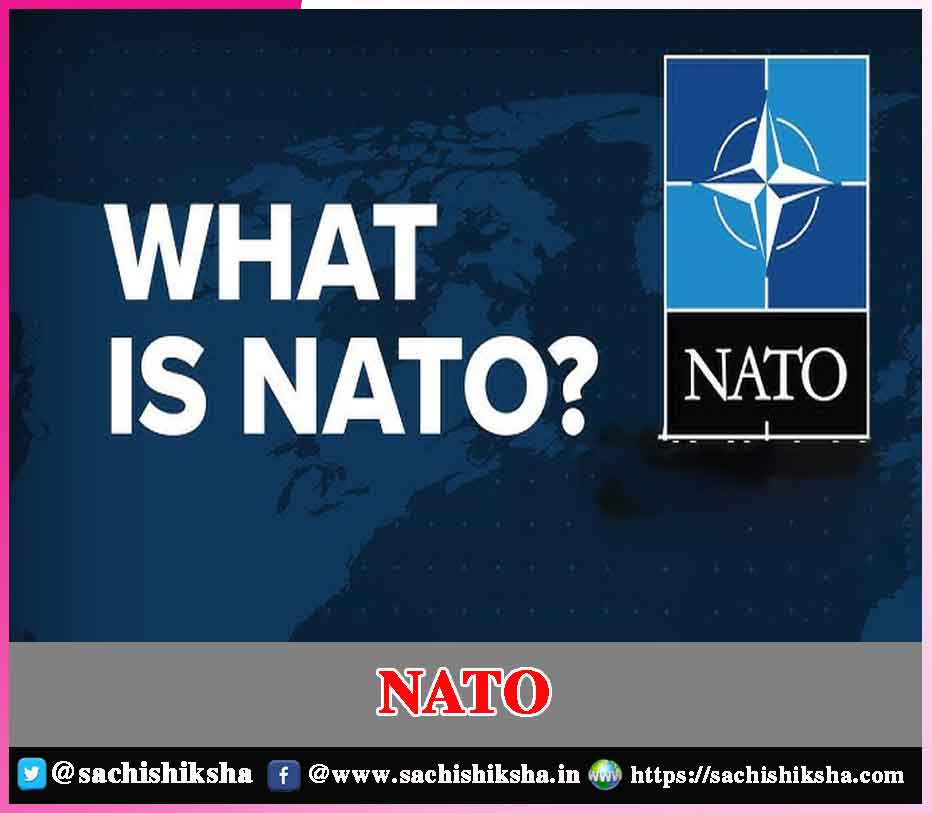NATO
Introduction: The North Atlantic Treaty Organization, or NATO, is one of the most enduring and influential alliances in modern history. Established in 1949, this intergovernmental military alliance was forged in the crucible of the Cold War. Yet, seven decades later, it remains a vital force for safeguarding peace, promoting stability, and ensuring collective security in an ever-evolving world. In this article, we delve into the history, objectives, challenges, and the future relevance of NATO.
Table of Contents
A Historical Perspective:

On April 4, 1949, representatives from twelve nations, including the United States, Canada, the United Kingdom, and France, signed the North Atlantic Treaty in Washington, D.C. The treaty’s fundamental principle was one of collective defense – an attack on one member nation would be considered an attack on all. This mutual commitment was designed to deter aggression and promote peace in Europe.
The Core Objectives of NATO:
- Collective Defense:
At its core, NATO’s primary mission is collective defense. The alliance is built on the principle of mutual assistance; an attack on any member is seen as an attack on all. This idea acts as an effective deterrent to potential enemies and is established in Article 5 of the NATO treaty.
- Crisis Management and Cooperative Security:
Over the years, NATO has expanded its role beyond collective defense. It has taken on missions related to crisis management, conflict prevention, and cooperative security. This includes peacekeeping operations in Bosnia and Herzegovina, Kosovo, and Afghanistan.
- Partnerships:
NATO actively seeks partnerships with non-member countries and international organizations. Through initiatives like the Partnership for Peace program, the alliance fosters cooperation and promotes stability in regions beyond the North Atlantic area.
NATO During the Cold War:
The Cold War was the defining period for NATO. The alliance was instrumental in maintaining a delicate balance of power during this era. The military capabilities of the United States, coupled with NATO’s collective defense commitments, acted as a powerful deterrent to the Soviet Union.
One of the most notable events in NATO’s history during the Cold War was the deployment of Pershing II nuclear missiles in Europe in the 1980s. This deployment was part of the broader strategy to counter the Soviet Union’s intermediate-range nuclear forces. The tensions surrounding this deployment were resolved through negotiations, eventually leading to arms control agreements such as the Intermediate-Range Nuclear Forces Treaty (INF).
The Post-Cold War Era and NATO’s Evolution:
The end of the Cold War brought significant changes to NATO’s role and mission. With the collapse of the Soviet Union in 1991, the alliance had to adapt to the new geopolitical realities. Rather than disbanding, NATO expanded its horizons.
- Enlargement:
NATO embarked on a path of enlargement, welcoming former Eastern Bloc countries and former Soviet republics into its fold. This expansion aimed to consolidate democracy and stability in Eastern Europe while strengthening NATO’s collective defense capabilities.
- Out-of-Area Operations:
NATO ventured into military interventions beyond its traditional area of operation. This included peacekeeping efforts in the Balkans during the Yugoslav Wars and a more extensive role in Afghanistan after the 9/11 attacks. These operations showcased NATO’s adaptability and its willingness to confront new security challenges.
Challenges and Contemporary Relevance:
NATO’s journey has not been without challenges, and its role has evolved in response to global shifts:
- Russia and Eastern Europe:
Russia’s actions in Ukraine, including the annexation of Crimea, have brought NATO’s eastern flank into focus. The alliance has responded with increased presence and deterrence measures in the Baltic States and Poland, underscoring the continued importance of collective defense.
- Counterterrorism:
For the first time, NATO invoked Article 5 after the 9/11 attacks, reflecting the alliance’s commitment to countering terrorism. Today, it continues to support the fight against terrorism, notably in Afghanistan.
- Cybersecurity:
The digital age has ushered in new threats, with cyberattacks becoming a growing concern. NATO has recognized the importance of cybersecurity in contemporary warfare and has been working to strengthen its cyber defense capabilities.
- Hybrid Warfare:
The alliance faces the challenge of countering hybrid warfare, which combines conventional military tactics with unconventional methods like disinformation campaigns and cyberattacks. NATO is adapting to confront these evolving threats.
- China’s Rise:
While primarily focused on the Euro-Atlantic region, NATO has begun to address the global implications of China’s rise, particularly in terms of security and trade.
- Climate Change and Security:
NATO recognizes the connection between climate change and security challenges. It is working to incorporate climate considerations into its planning and operations.
- Pandemic Response:
The COVID-19 pandemic demonstrated the importance of cooperation and coordination in addressing global crises. NATO played a role in facilitating the distribution of medical supplies and supporting member states in their response to the pandemic.
The Future of NATO:
NATO’s future relevance hinges on its ability to navigate a complex and rapidly changing world. Some key considerations for the alliance’s future include:
- Adaptability:
NATO must remain adaptable to address emerging security challenges. This includes strengthening cyber defenses, enhancing intelligence sharing, and investing in emerging technologies.
- Collective Defense:
The core principle of collective defense remains paramount. NATO must continue to reassure its eastern members and maintain a credible deterrent against potential aggressors.
- Partnerships:
Expanding and deepening partnerships with non-member countries and international organizations will be crucial for addressing global challenges effectively.
- Political Cohesion:
Maintaining political cohesion among member states is essential. Differences in strategic priorities and defense spending must be managed to preserve NATO’s unity and effectiveness.
- Transatlantic Relationship:
The transatlantic bond between Europe and the United States remains at the heart of NATO. Strengthening this relationship will be vital for the alliance’s future.
Conclusion:
NATO has come a long way since its inception in 1949. It has evolved from a collective defense alliance during the Cold War to an organization that addresses a various range of security challenges in the 21st century. As the world continues to change, NATO’s continued relevance lies in its ability to adapt, foster cooperation, and ensure collective security. In a world where global challenges transcend borders, NATO remains a cornerstone of stability and peace.












































